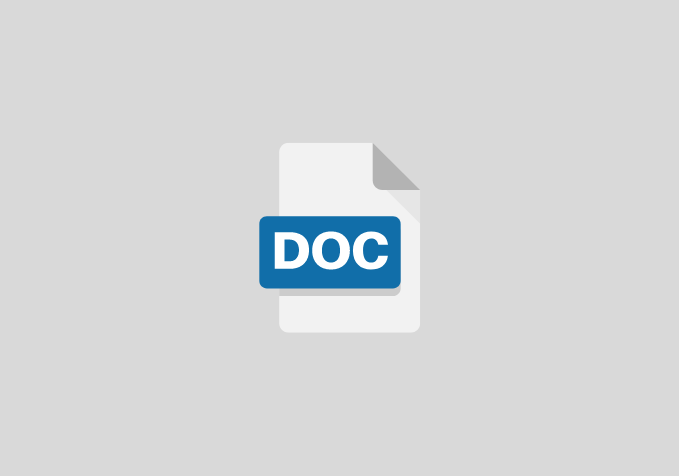A Proposal on Effects of Technology Utilization on Health Services Delivery in Lagos State.
CHAPTER ONE
Objective of the study
The following objectives will be ascertained;
- To ascertain the knowledge and attitude of staff towards the use of ICT on health service delivery at University of Lagos teaching hospital
- To ascertain the efficient and effective is the use of ICT on health service delivery at University at University of Lagos teaching Hospital
- To ascertain the factors opposed against the application of ICT on health service delivery at University at University of Lagos teaching hospital
CHAPTER TWO
REVIEW OF RELATED LITERATURE
Information and Communication Technologies
ICTs have been defined as any product that will store, retrieve, manipulate, transmit or receive information electronically in a digital form (Hughes et al., 2002). ICTs are divided into old/conventional and new ICTs. The old ones include radio, television, newspapers and magazines, while the new ones include computers, telefaxes, telephones, CD-ROMs, cable television and satellite systems. Literature identifies the conventional ICTs with the term media technology, and the new ones with information technology. This study is about the new ICTs. In the study, sometimes the term new ICTs is used interchangeably with new media to mean the same thing. When the new ICTs made their entry, there were predictions that they would replace the conventional ones (Williams et al., 1988: xi). However, far from doing this, the new ICTs are complementing the conventional. They enable the provision of other communication services that were once inaccessible or costly.
The new ICTs focused on in this study are computers. Although they are ICTs in their own right, computers are integral parts of most modern telecommunication systems. Some of the world’s most sophisticated computers serve as ‘switches’ for major communications networks. Furthermore, miniaturised computer-like components enable the operation of most transmission and receiver technologies, ranging from telephones to television sets (ibid.: 7). There are different kinds of computers, and they include personal computers, laptops and handheld computers. It is the handheld computers that are the subject of this study.
Health Management Information System
The term Health Management Information System (HMIS) refers to a system of generating health information, which information is primarily used to support management decisions, especially for resource allocation.11 It is used in determining how to prioritise resources for health services. According to Uganda’s Health Unit Procedures Manual (MoH, 2001: 1), the health management information collected in the country is used to improve the ability of health units to provide optimal preventive and curative care.
CHAPTER THREE
Theoretical Framework
Communication for development has emerged as a specific field in media studies, born out of the belief that communication processes can be used to improve and/or change people’s livelihoods, thus contributing to development. Scholars reason that communication media can be used as agents of development, since information is one of the prerequisites of socio-economic development (Moemeka, 1994; White et al., 1994; Pool, 1990).
Wilbur Schramm and Daniel Lerner kicked off investigations into the traditional media’s place in development, but one of the first people to research on the new ICTs was Edwin Parker (Williams et al., 1988: 29). He had pioneered research on computers and communication satellites. He pointed out, for instance, that field experiments on development communication in Third World nations seldom explained more than 10% or 20% of the variance of such dependent variables as knowledge about, and adoption of, health and agricultural innovations. In contrast, he might explain 70% to 80% of the variance in health adoption behaviour in studies of two-way satellite radio communication linking Eskimo and Indian villagers in Alaska with medical expertise. Therefore instead of accepting communication technology as a given, Parker considered it as a variable that communication scholars could control, influence and study (ibid.)
CHAPTER FOUR
RESEARCH DESIGN AND METHODOLOGY
The researcher used descriptive research survey design in building up this project work. The choice of this research design was considered appropriate because of its advantages of identifying attributes of a large population from a group of individuals. The design was suitable for the study as the study sought to effects of technology utilization on health services delivery
METHOD OF DATA ANALYSIS
The researcher will employ oral and direct interview in administering this research questions. Responses from the respondents were needed unlike questionnaires, which is less rewarding due to late receipt and loss of responses from respondents. The method of data analysis that will be used by the researcher is the simple percentage. More so, percentage and degrees of the responses will also be used in the analysis. Here, the ratio of those whose responses were not in the affirmative will be found and conclusions will be drawn there upon. Representations of the level of responses will be made in tabular form.
CHAPTER FOUR
References
- Gour, N. and Srivastava, D. (2010) Knowledge of Computer among Healthcare Professionals of India, a Key toward e-Health. Telemedicine Journal and e-Health, 16, 957-962.
- Rodrigues, J. (2014) Advancing Medical Practice through Technology: Applications for Healthcare Delivery, Management, and Quality. Medical Information Science Reference/IGI Global, Hershey, PA.[
- Guah, M.W. (2011) Healthcare Delivery Reform and New Technologies, Organisational Initiatives. Medical Information Science Reference Hershey, PA.
https://doi.org/10.4018/978-1-60960-183-6 - Burney, A., Mahmood, N. and Abbas, Z. (2010) Information and Communication Technology in Healthcare Management Systems: Prospects for Developing Countries. International Journal of Computer Applications, 4, 27-32.
https://doi.org/10.5120/801-1138[ - Arendt, L. (2013) Barriers to ICT Adoption in SMEs: How to Bridge the Digital Divide? Journal of Systems and Information Technology, 10, 93-108.
https://doi.org/10.1108/13287260810897738 - Goel, S. (2014) Textbook of Hospital Administration. Elsevier Health Sciences, APAC, London
- Housego, A.O. and Brien, T. (2012) Delivery of Public Services by Non-Government Organisations. Australian Journal of Public Administration, 71, 211-220.
https://doi.org/10.1111/j.1467-8500.2012.00765.x - World Health Organization (2014) E-Health.
http://www.who.int/topics/ehealth/en/ - Khan, S.Z., Shahid, Z., Hedstrom, K. and Andersson, A. (2012) Hopes and Fears in Implementation of Electronic Health Records in Bangladesh. The Electronic Journal of Information Systems in Developing Countries, 54, 1-18.
https://doi.org/10.1002/j.1681-4835.2012.tb00387.x[


